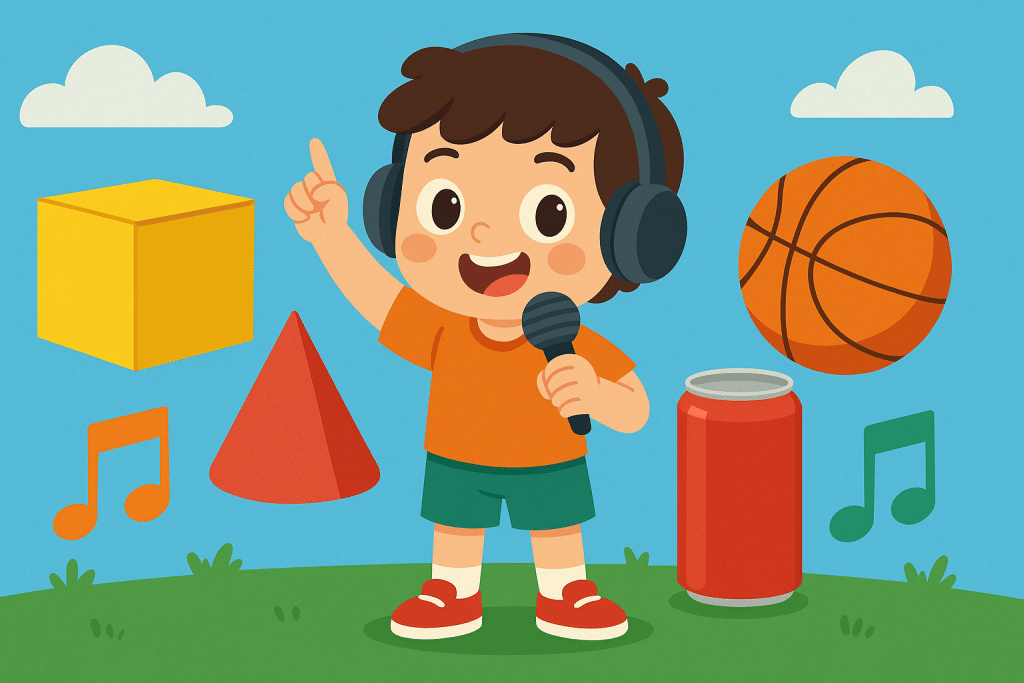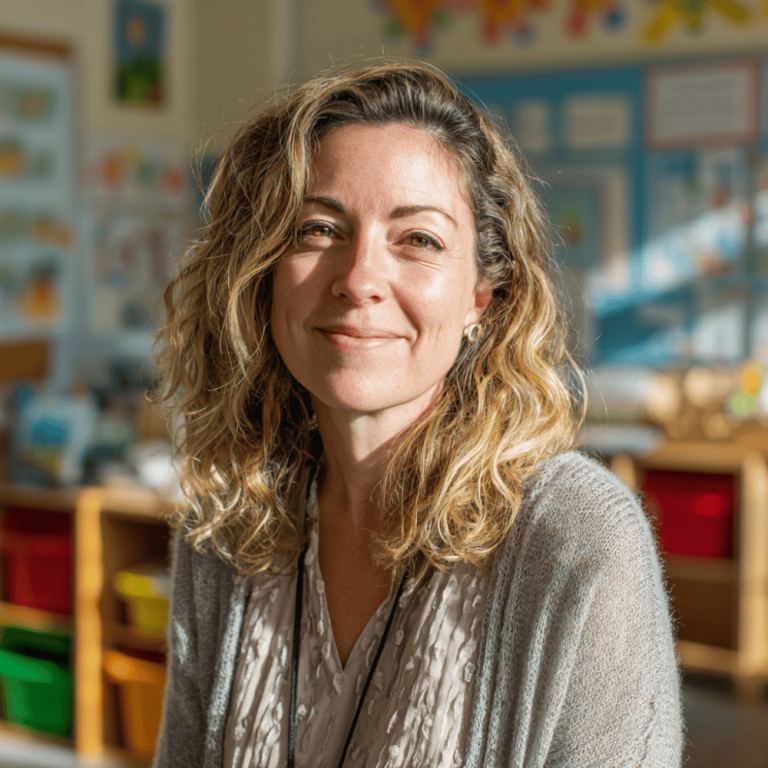Learning about 3D shapes for kids is an exciting part of early math. These shapes are not flat like drawings but solid forms that we can see, touch, and hold in real life. They help children understand size, space, and how objects fit together.
I’ve found that using everyday examples, songs, and simple questions makes the lesson more enjoyable and easier to remember. From a ball to a gift box, shapes are everywhere around us, and connecting them to daily life builds both confidence and curiosity.
This guide shares definitions, activities, and teaching tips designed for parents and teachers who want to make learning fun and meaningful. By the end, kids will not only know the shapes but also recognize them all around.
What are the Main 3D Shapes?
3D shapes are solid shapes that have length, width, and height. This means they are not flat like drawings, but take up space and can be held in your hand.
- Cube: A cube has 6 square faces, 12 edges, and 8 corners. Example- You can see cubes in dice and gift boxes.
- Sphere: A sphere is round and has no edges or corners. Example- Balls and marbles are perfect examples of spheres.
- Cone: A cone has a flat circle at the bottom and a sharp point at the top. Example: Ice cream cones and traffic cones look just like this shape.
- Cylinder: A cylinder has two flat circles on top and bottom, with a curved surface in between. Example- Soda cans and candles are common cylinders.
- Prism: A prism has flat faces, with two of them being the same shape on opposite sides. Example- A tent or a box of crayons shows how prisms look in real life.
- Pyramid: A pyramid has a flat base and triangular faces that meet at a point. Example- The pyramids in Egypt or toy block pyramids are real examples.
Learning 3D shapes is more than naming them – it builds early math skills like recognizing patterns and counting faces, edges, and corners.
It also develops spatial reasoning, helping kids see how objects fit together in the real world. These lessons lay a strong foundation for geometry and future math learning.
2D vs. 3D Shapes
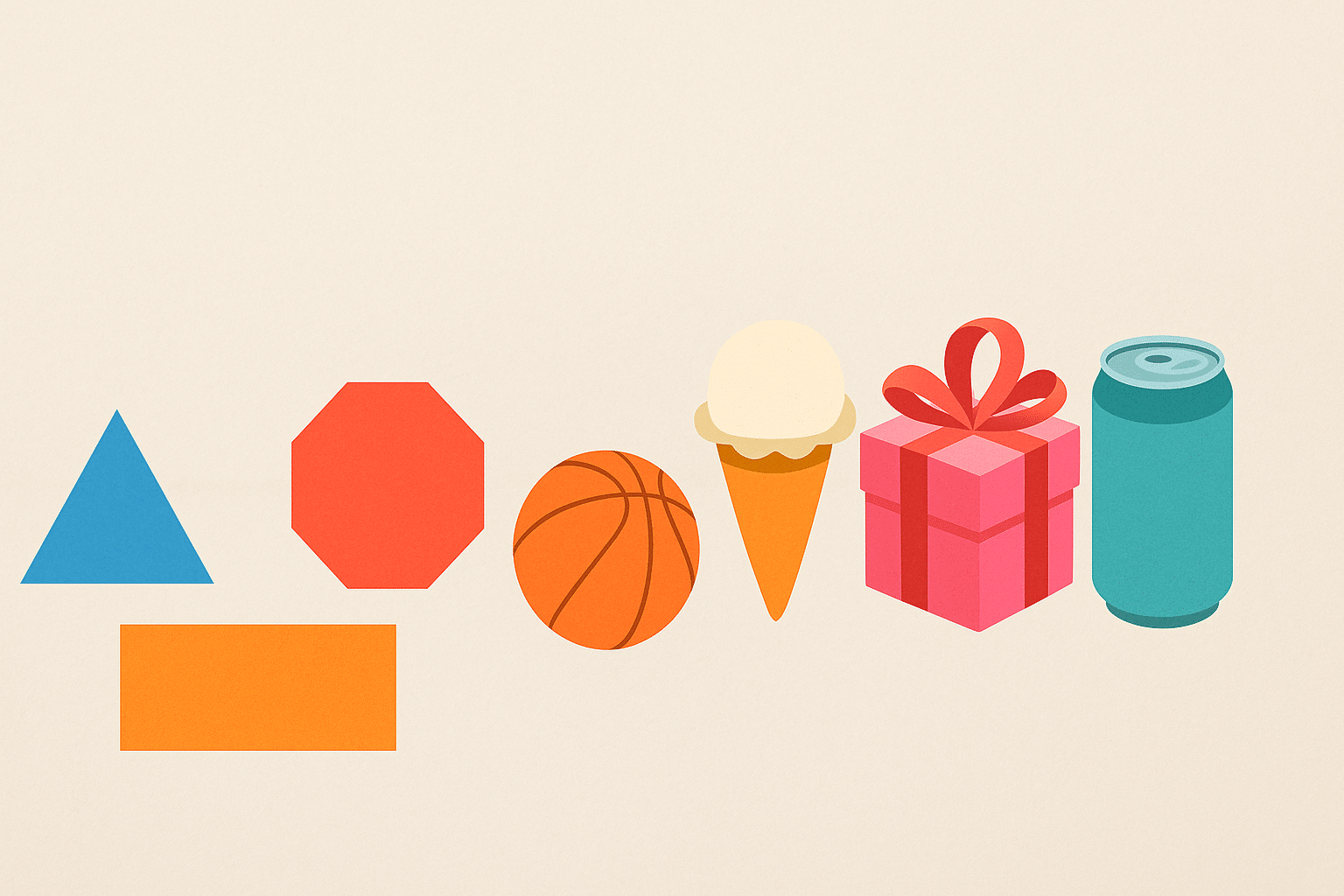
When kids are learning about shapes, it’s important to show how 2D (flat) shapes are different from 3D (solid) shapes. A quick chart makes it easy to compare.
| Feature | 2D Shapes | 3D Shapes |
|---|---|---|
| Definition | Flat shapes with only length and width | Solid shapes with length, width, and height |
| Example Shapes | Circle, Square, Triangle, Rectangle | Sphere, Cube, Cone, Cylinder, Pyramid |
| Can You Hold It? | No, they are flat and can only be drawn | Yes, they take up space and can be held |
| Faces/Edges/Vertices | Do not have faces, edges, or vertices | Have faces (flat surfaces), edges (lines), and vertices (corners) |
Everyday Life Examples
We see both 2D and 3D shapes all around us, and showing kids real-life examples makes it easier for them to understand the difference.
- 2D Shapes: A drawing of a triangle on paper, a stop sign, and a rectangle on a tablet screen.
- 3D Shapes: A basketball (sphere), an ice cream cone (cone), a gift box (cube), and a soda can (cylinder).
Properties of 3D Shapes
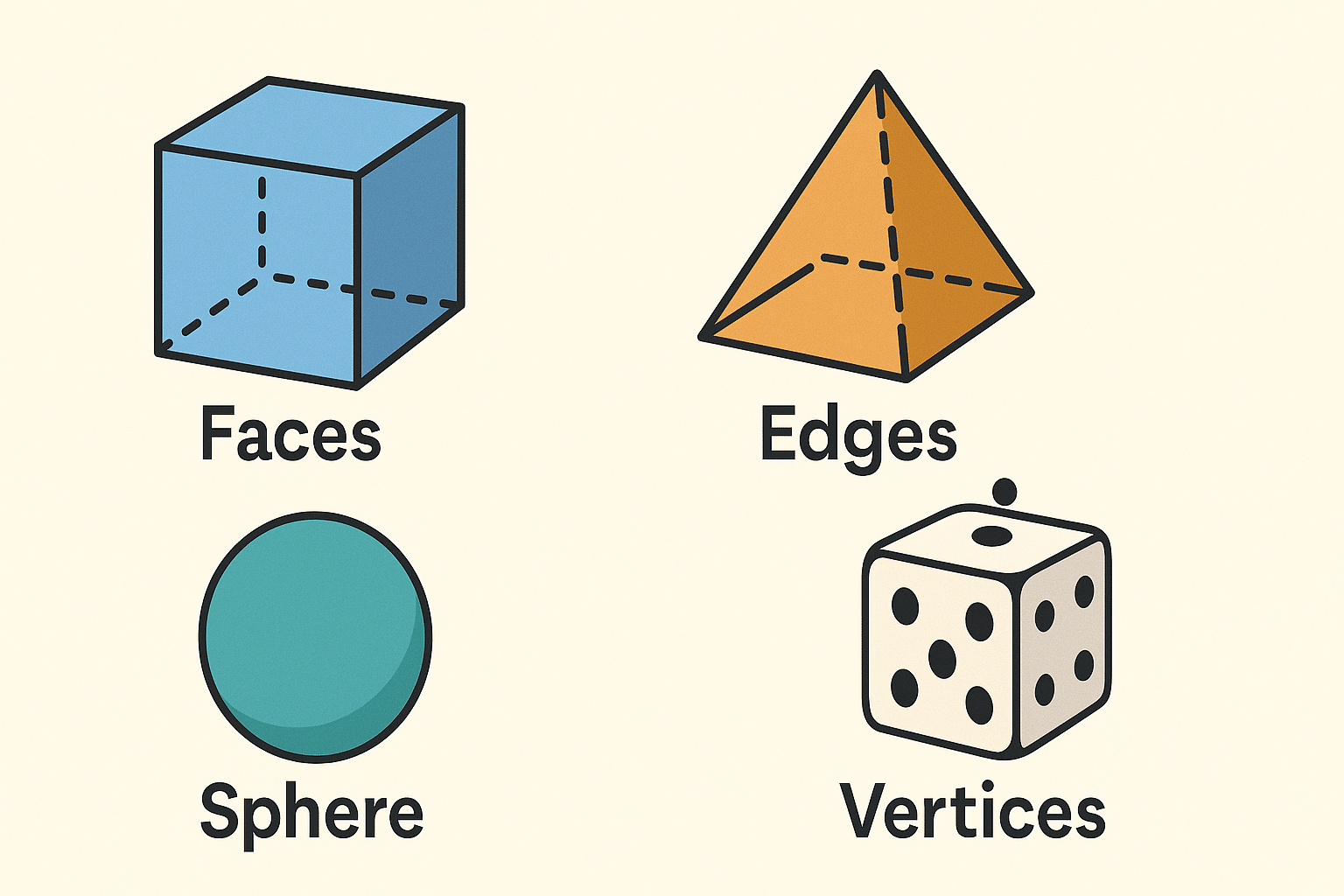
3D shapes are special because they have parts that 2D shapes don’t have. These parts help us tell one shape from another.
- Faces: The flat or curved surfaces on the outside of a shape. Example: A dice (cube) has 6 square faces.
- Edges: The straight lines where two faces meet. Example: A box (rectangular prism) has 12 edges.
- Vertices (corners): The points where edges meet. Example: A pyramid has a sharp vertex at the top.
Some shapes don’t have these parts: A ball (sphere) has no edges or corners, just one curved face.
Learn with Songs: Best 3D Shapes for Kindergarten
Songs are one of the easiest ways for children to learn about 3D shapes. The rhythm and repetition make names stick, and the fun tunes keep kids engaged. Here are some of the most popular and kid-safe options:
1. The Singing Walrus: 3D Shapes Song
This is a playful tune that introduces cubes, spheres, cones, and cylinders through bright, colorful animations. It’s especially great for preschool and early grades because the catchy rhythm keeps kids engaged.
The simple visuals and repetitive lyrics make it easy for young learners to sing along and remember the shapes.
2. Numberock: 3D Shapes Song
Numberrock is a lively math-based tune that mixes fun lyrics with clear examples of 3D shapes. It helps kids remember shapes by showing how they appear in everyday life, like balls, boxes, and cones.
The upbeat style makes it ideal for classroom use, and kids enjoy singing along while connecting shapes to real objects they know.
3. Brain Candy TV: 3D Shapes Educational Video
This video is a longer, story-style lesson that teaches shapes by learning everyday objects in a bedroom. It’s perfect for kids who enjoy learning through storytelling, as it connects shapes to things they already see around them.
The friendly narration and clear visuals keep children engaged, making it a useful tool for both home learning and classroom activities.
Why Songs Work So Well
- Repetition helps kids memorize names.
- Music activates both sides of the brain, making learning stronger.
- Songs keep lessons short, fun, and easy to repeat at home or in class.
Movement Activities While Singing
- Clap every time you hear the word “edge.”
- Jump when a “face” is mentioned.
- Point around the room when a real-life object is shown (ball, box, cone).
Fun Learning Activities for 3D Shapes
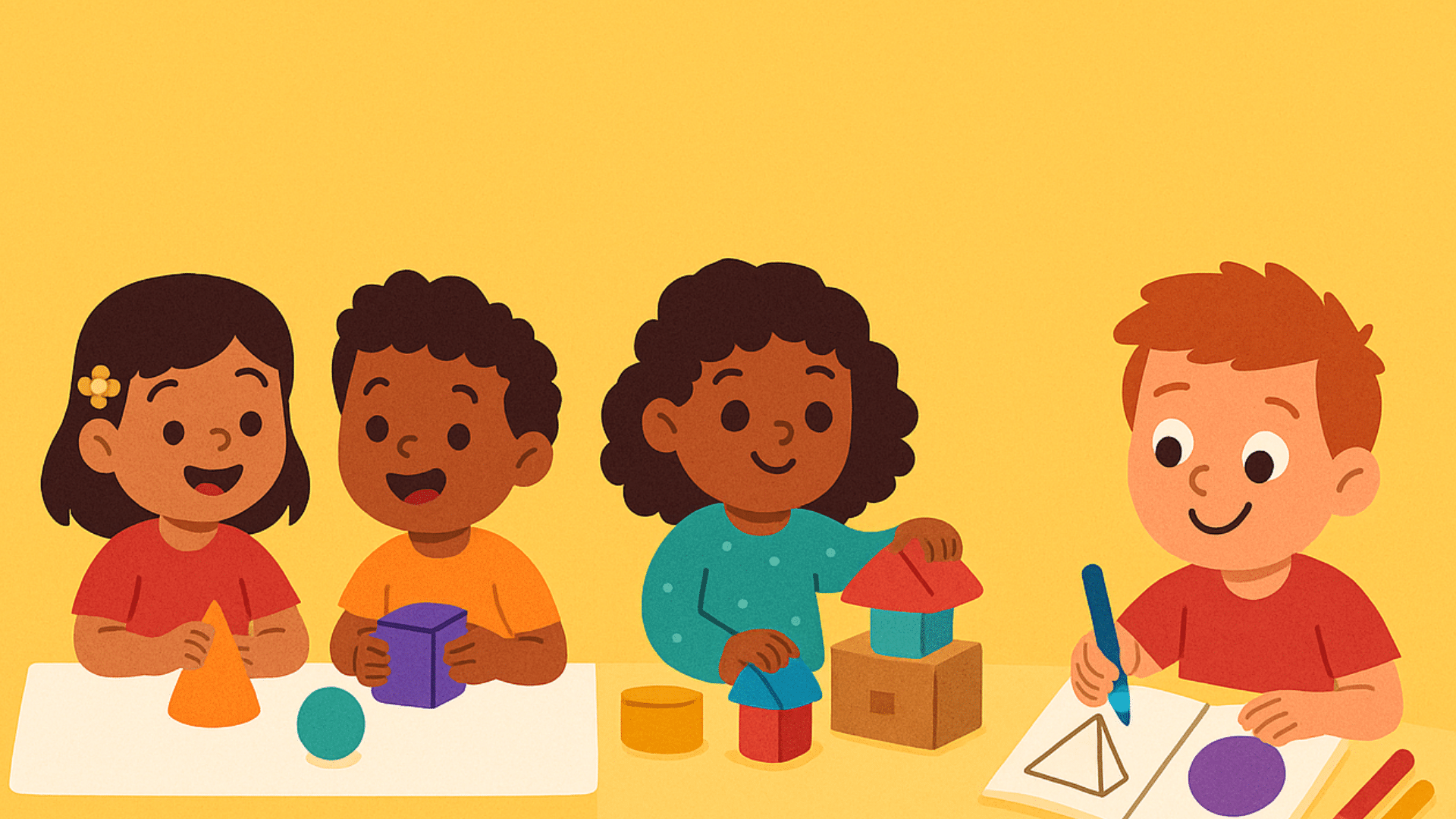
Fun, hands-on activities help children understand 3D shapes while keeping lessons engaging and memorable.
- Songs and Rhymes: Music is a powerful way for kids to learn. Singing along with shape songs makes names easy to remember and keeps lessons fun. Parents and teachers can use safe, kid-friendly YouTube videos to add rhythm and repetition to learning.
- Play-Doh or Clay Modeling: Kids love creating with their hands. By rolling clay into balls (spheres), pressing it into cubes, or shaping cones, they see how 3D shapes form in real life. This hands-on activity strengthens both creativity and understanding.
- Building with Blocks or Household Objects: Stacking toy blocks, empty boxes, or even cans shows how 3D shapes fit together. Children can experiment with building towers, bridges, or houses while naturally recognizing cubes, cylinders, and prisms.
- Drawing and Coloring Worksheets: Tracing and coloring help children match the names of shapes to their pictures. Worksheets with cubes, spheres, cones, and pyramids allow kids to connect learning with art and improve memory through practice.
Printable Resources
Worksheets and Flashcards: Simple worksheets help kids match shapes to objects, trace outlines, and review names. Flashcards can be used for quick practice at home or in class, and a downloadable pack gives parents and teachers an easy, ready-to-use resource.
Coloring Pages: Fun coloring sheets with cubes, spheres, cones, and pyramids allow children to connect shapes with creativity. Coloring also reinforces memory while keeping kids engaged.
Download my free 3D shape worksheet PDF to get flashcards, worksheets, and coloring pages. It’s a ready-to-use resource for both classroom lessons and fun learning at home.
Teaching Tips for Parents and Teachers
Parents and teachers can make learning 3D shapes easier by using play, real-life objects, and simple questions that connect shapes to everyday life.
By Age Group
The way children learn shapes changes as they grow, so it helps to introduce 3D shapes step by step by age group.
- Preschool (3–4): Introduce simple shapes (ball = sphere, box = cube, cone = ice cream cone).
- Kindergarten (5–6): Teach faces, edges, and corners using blocks or toys.
- Early Grades (7+): Compare 2D vs 3D shapes, count faces, edges, and vertices.
Everyday Questions
Asking kids quick shape questions during daily routines makes learning natural and fun.
- What shape is your apple? (sphere)
- What shape is your sandwich? (cube/rectangular prism)
- Can you find something shaped like a cone?
- Does this ball have corners?
- How many faces does your box toy have?
Conclusion
Learning about 3D shapes for kids goes beyond memorizing names; it gives children the tools to see math in their everyday world.
From a ball to a gift box, these shapes help kids understand size, space, and structure, while also building early math and problem-solving skills.
Parents and teachers can make lessons fun with songs, activities, and simple questions that connect shapes to daily life.
By combining music, play, and practice, children quickly gain confidence and curiosity about the world around them. Over time, these skills lay a strong foundation for more advanced math learning.
Frequently Asked Questions
At what age should kids start learning 3D shapes?
Most children can begin recognizing simple 3D shapes, like balls and boxes, around ages 3–4. By kindergarten, they’re ready to learn names and basic properties like faces and corners.
Can coloring really help kids learn shapes?
Yes, coloring connects visuals with names. When children color cubes, cones, and spheres, they remember them better while also building creativity and focus.
What are some quick games to teach 3D shapes?
Try “Shape Bingo” with pictures of shapes, or a “Guess the Shape” game where children feel an object in a bag and guess if it’s a cube, cylinder, or sphere.


